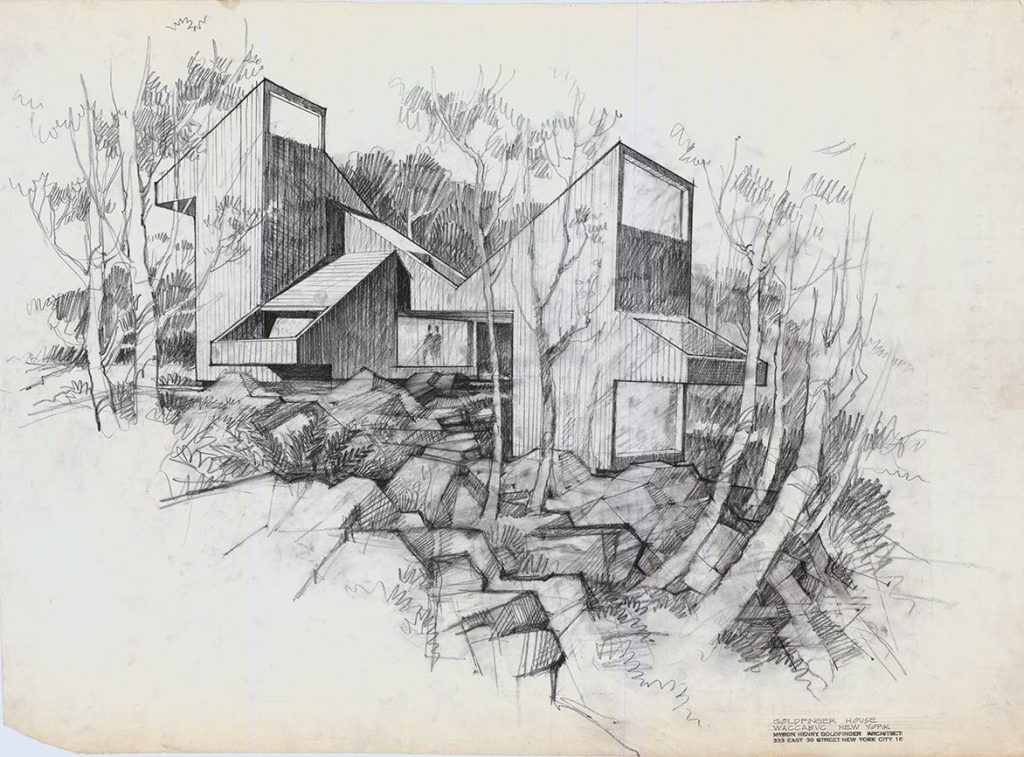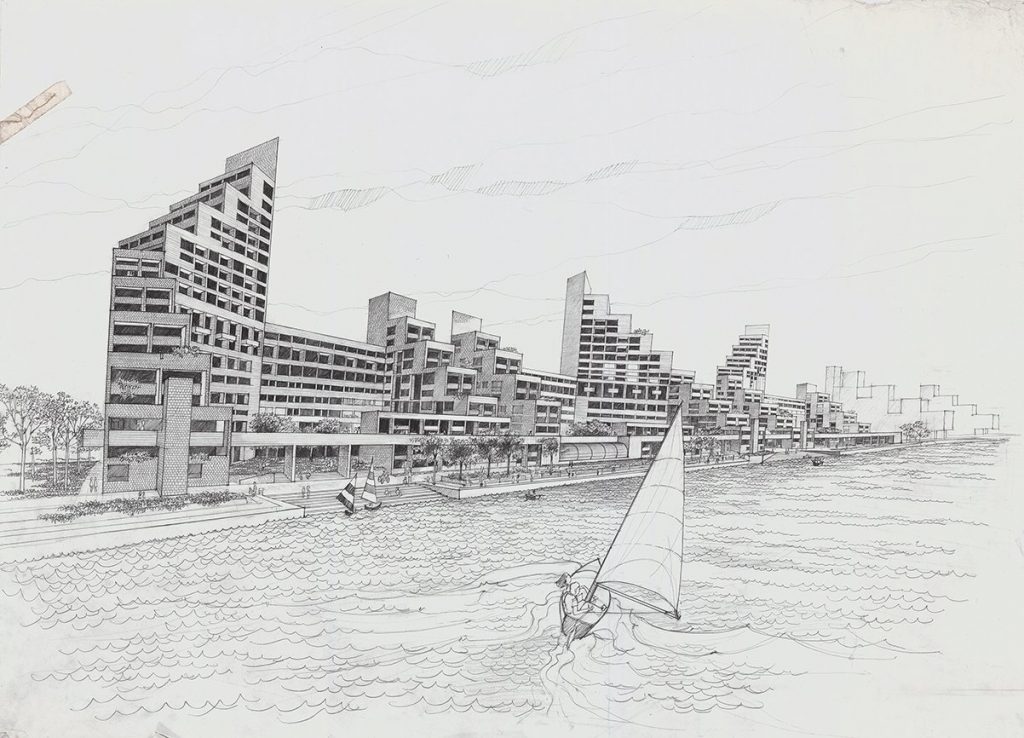Events October 2024




Circle, Square, Triangle: The Architecture of Myron Goldfinger
Circle, Square, Triangle: The Architecture of Myron Goldfinger is two interconnected exhibitions of Myron Goldfinger’s architecture; one at the Paul Rudolph Institute for Modern Architecture and one at Mitchell Algus Gallery. The exhibitions offer complementary studies of Goldfinger’s work, exploring his built residential projects and his unbuilt and community architecture. Both consist of original material uncovered during the Paul Rudolph Institute’s process of archiving and indexing Goldfinger’s estate, much of which has never been seen.
The curation of Circle, Square, Triangle sets out to demonstrate Goldfinger’s characteristic and distinctive approach to architecture, which is embedded in the title itself. The phrase “Circle, Square, Triangle” originates from Goldfinger’s own words—he considered these three basic shapes to be the heart of his design, shapes he would transform and assemble into dramatic volumes. His playfulness with geometry led to spectacular interior and exterior features in his work, such as soaring ceilings and gravity-defying cantilevers. Goldfinger insisted that “the fashion of the moment is so temporary. Only the timeless basic geometry repeats in time.” His work was both deeply intuitive while also conveying a clarity of vision. With its clean lines and careful volumetric assemblage, it was honest and direct, described best by Goldfinger himself as ‘ordered simplicity’.
Born in 1933, Myron Goldfinger grew up in Atlantic City. He studied architecture at the University of Pennsylvania, under Louis Kahn and Paul Rudolph, who informed his approach to geometry, spatial hierarchy and material expression. Goldfinger worked for Karl Linn, Skidmore, Owings & Merrill, and Philip Johnson before establishing his own practice in 1966. That same year, he married interior designer June Matkovic, who designed the interiors for his buildings. Goldfinger also began teaching at the Pratt Institute from 1966 to 1976. He designed residences around the world, focusing particularly in the Tri-State area.
A World I Wanted To Live In: The public and unbuilt work of Myron Goldfinger
The Mitchell Algus Gallery will explore unbuilt projects that Goldfinger designed including several for New York City, providing a local context for the exhibition. This includes a housing proposal for Roosevelt Island designed in 1975 and a proposal for the Dag Hammarskjold Plaza from 1970. A collection of renderings and models outline the design process.
Through December 31
The Mitchell Algus Gallery
132 Delancey Street, NYC
Details
Houses I Never Lived In: The residential work of Myron Goldfinger
The Paul Rudolph Institute for Modern Architecture is presenting multimedia studies outlining the designs for several houses, including contemporary and historical models, a range of original drawings, from conception to construction—either graphite on vellum or ink on mylar—and original photographic prints by Norman McGrath. Projects include the Goldfinger Residence in Waccabuc, NY (1969); the Zack Residence in Sands Point, NY (1977); and the 1975 design for Roberta Flack’s apartment at the Dakota building in New York City.
Through March 22
The Modulightor Building
246 East 58th Street
Details